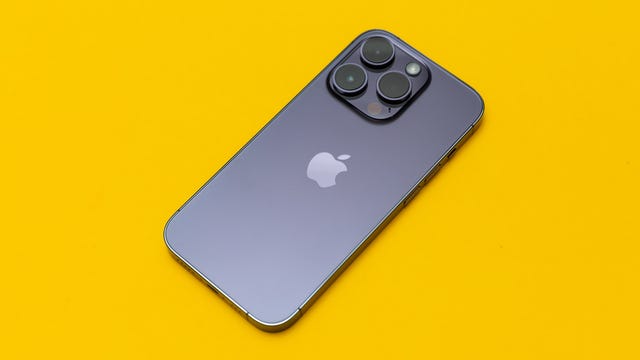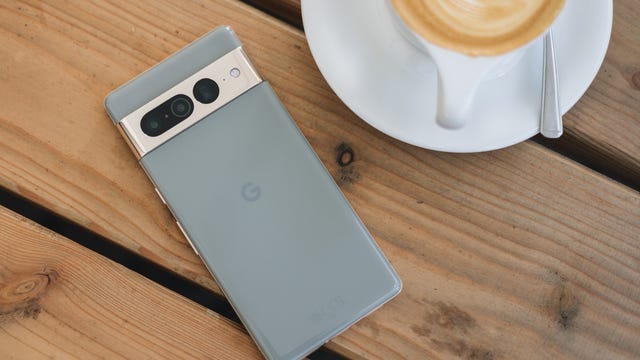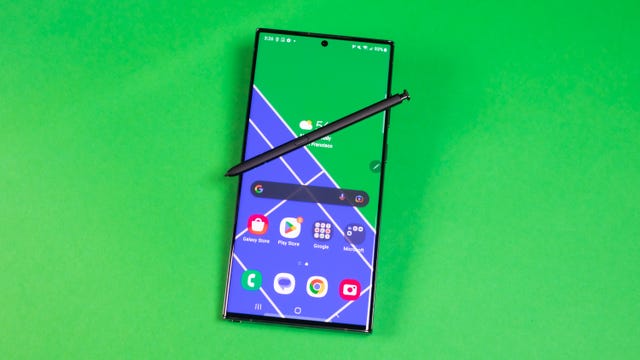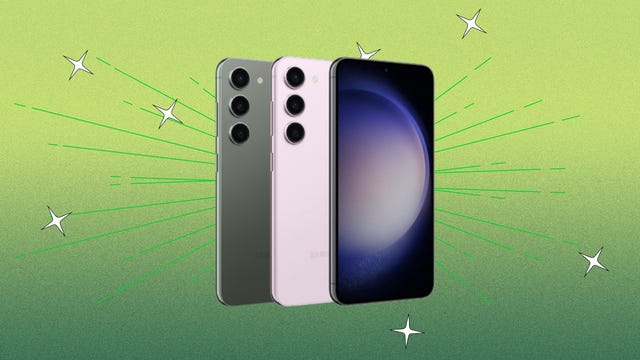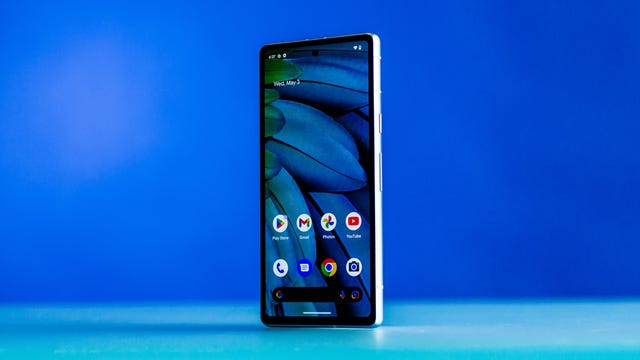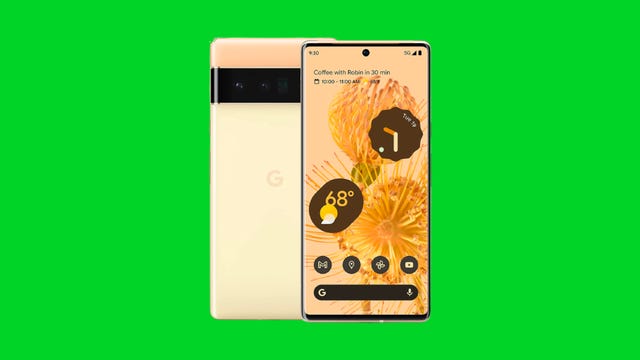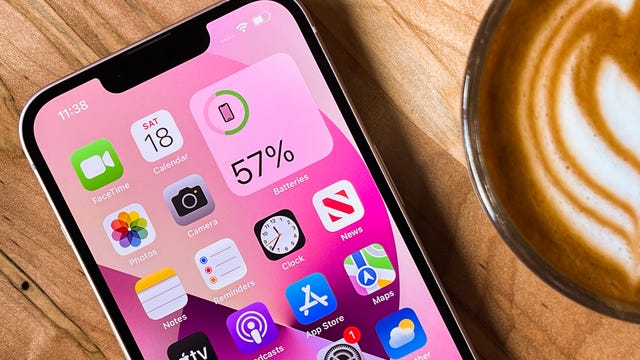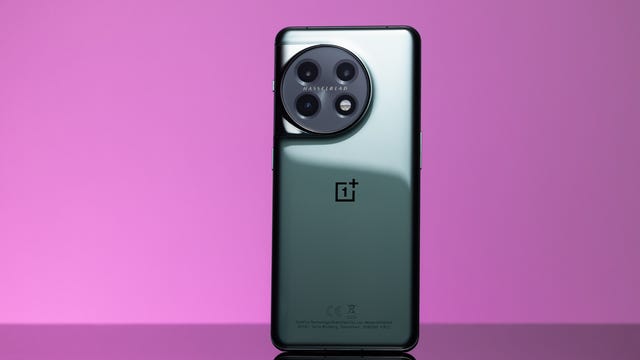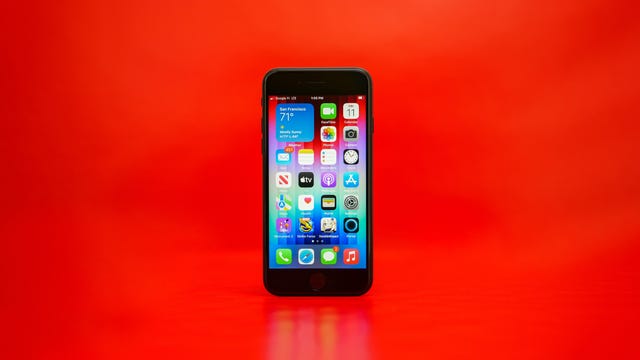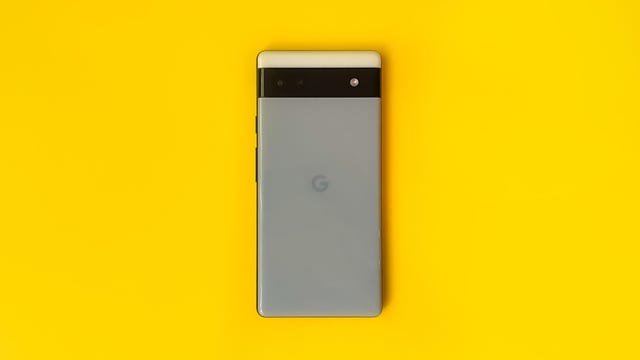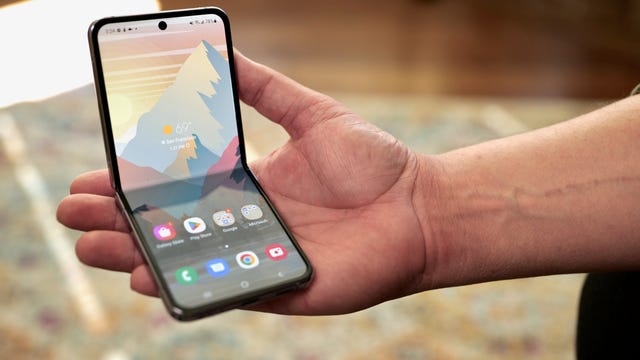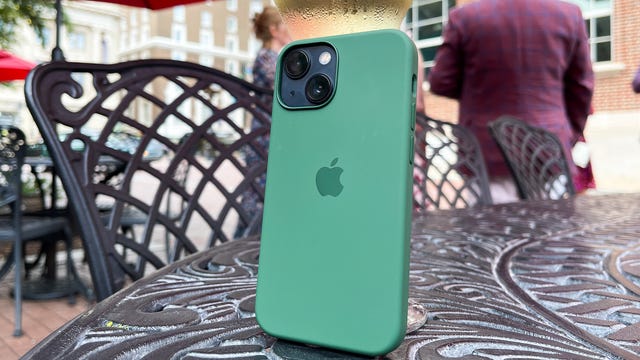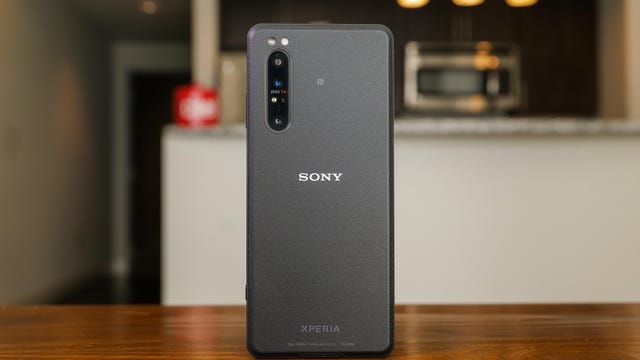Technologies
No Matter Your Budget, These Are the Best Phones of 2023
Whether you want the latest Samsung Galaxy phone, a shiny new iPhone or something simple and affordable like Google’s Pixel 7A, we’ve found the best phones for everyone.
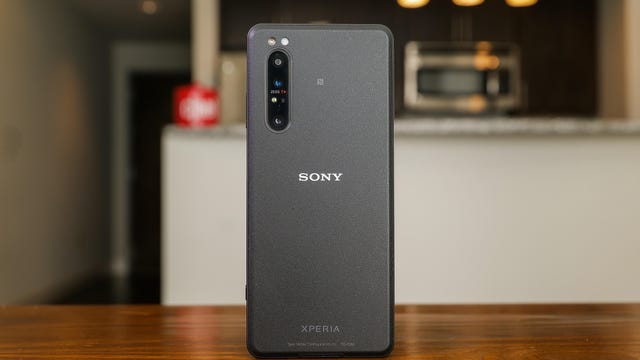
In this article:
Many of today’s phones offer fast performance, vibrant displays and powerful cameras. But with so many options, finding the right choice isn’t always easy. To simplify the decision, we’ve rounded up our top picks — each phone on this list meets the requirements for what CNET considers to be the best smartphones. From high-end phones to budget devices under $500 and everything in between, there are plenty of worthwhile options for everyone.
Every phone on this list has been thoroughly reviewed and tested, and you’ll find options across iPhone and Android that fit different needs.
What is the best phone for most people?
The Apple iPhone 14 and 14 Pro impressed us with excellent performance from their processors and the cameras. But if you aren’t an iPhone fan, there are plenty of great Android choices, including the Pixel 7 Pro and the Samsung Galaxy S23 Ultra. They both offer everything you could want, from high-end performance to superb cameras.
Advertiser Disclosure
Both the Pixel 7A and Galaxy S23 are ideal for those who prefer smaller phones, but the Pixel 7A is an excellent choice for those shopping on a budget at its $499 price.
There are a number of other top smartphones with eye-catching features, such as Samsung’s new Galaxy Z Fold 4, which has a foldable screen. These can be quite expensive, but if your cash doesn’t stretch that far, worry not. More and more affordable phones, such as the Pixel 6A, pack great specs, high-speed 5G connectivity and more approachable prices.
Most of the phones below are available unlocked and should be compatible with the big four US wireless carriers, unless otherwise specified. Many of the best phones of 2022 remain available and some are included below, but we review and update this list regularly and will keep you posted as we continue to test new models throughout 2023. For more info, read our guide to help find the best phone for your needs and take a look at our tips on how to buy a new Apple iPhone or Android phone and where to snag the best phone deals.
Best phones of 2023
Apple’s iPhone 14 Pro and Pro Max introduce sweeping changes like the Dynamic Island, a new 48-megapixel camera system and Apple’s new A16 Bionic processor. All of these upgrades come together to make for an experience that feels fresh and fast. The upgrades to the main camera allow it to take some truly stunning photos, making the phone a solid option if you’re into mobile photography.
As Apple’s top phone it doesn’t come cheap — especially if you want the larger Max model — but if you’re looking for the best all-round performance in an iPhone, then the 14 Pro is the phone to get.
While the base iPhone 14 doesn’t have the same triple camera array or new Dynamic Island notch as its pricier 14 Pro sibling, it still offers a lot to be excited about and comes with a more affordable price. CNET editor Patrick Holland describes it as «a good upgrade for most people» thanks to its solid performance, updated main camera and various other tweaks including a more repairable glass back in case it takes a tumble.
It’s not a huge overhaul from last year’s models, but if you’re in the market for a new iPhone and you don’t fancy spending the big bucks on the Pro series, then it’s a great option to consider.
With its stellar triple camera, refined design and spacious 6.7-inch screen, there’s a lot to love about the Pixel 7 Pro. Although it’s not very different from the previous Pixel 6 Pro, it will feel like a big change to those upgrading from a phone that’s more than two years old. Google has improved the zoom capabilities on the Pixel 7 Pro, giving it a 30x digital zoom compared to the 6 Pro’s 20x range for capturing tighter shots. Both the Pixel 7 and 7 Pro have some new features powered by Google’s Tensor G2 chip, such as the ability to sharpen old photos. You’ll also get free access to Google’s VPN on the Pixel 7 and 7 Pro.
At $899, the Pixel 7 Pro is cheaper than both the $1,000 Galaxy S23 Plus and $1,200 Galaxy S23 Ultra at their regular starting prices, making it a solid choice for those who want a giant screen and an excellent camera for less.
The Galaxy S23 is a lot, but in a good way. It’s more than most people need in a phone, but that doesn’t make it any less impressive. Samsung made improvements to the camera’s resolution (200 megapixels compared to 108 megapixels), color tones and dynamic range, while retaining the same edgy design and massive 6.8-inch screen as its predecessor. There’s also a new Qualcomm Snapdragon 8 Gen 2 processor that’s been optimized specifically for Samsung’s phones, which brings faster performance compared to the Galaxy S22 Ultra.
Starting at $1,200, it may be an understatement to call this phone expensive. But those willing to pay more for a giant screen and a high-quality, versatile camera won’t be disappointed. Read our Samsung Galaxy S23 Ultra review.
Android fans looking for a petite phone don’t have much to choose from. But the 6.1-inch Galaxy S23 provides a compelling option for those who want a phone that feels compact but still provides enough screen space. The Galaxy S23 comes with routine upgrades like a fresh processor (a version of Qualcomm’s Snapdragon 8 Gen 2 that’s been optimized for Samsung’s phones), a slightly new design and a higher-resolution selfie camera. But it’s the Galaxy S23’s larger battery that makes it worth recommending. Read our Samsung Galaxy S23 review.
Google’s budget phone took a leap forward in 2023 with the Pixel 7A, which offers many of the same benefits as the Pixel 7 but at a cheaper price. Like the Pixel 7, the Pixel 7A runs on Google’s Tensor G2 processor, meaning it has many of the same photo editing and language translation features as its pricier sibling. The Pixel 7A’s 64-megapixel camera also takes excellent photos that rival the Pixel 7’s in quality.
While we still like the Pixel 7, the Pixel 7A’s lower price makes it a better deal for most people. Only opt for the Pixel 7 if you really want a slightly larger screen and are willing to pay the extra $100 for it. Otherwise, the main differences between the Pixel 7 and 7A come down to the former’s more durable build, slightly faster charging and its ability to wirelessly charge compatible accessories. The Pixel 7 also has a larger camera sensor that’s more sensitive to light, according to Google, but CNET’s Lisa Eadicicco didn’t notice much of a difference.
Google no longer sells the Pixel 6 Pro through its website, but you can still find it through some third-party retailers at a significant discount for now. The Pixel 6 Pro’s unique design, great software additions, superb camera quality and solid all-around performance earned the phone an excellent rating when CNET reviewed it in 2021. It’s more than a year old, but many of our initial impressions still hold true. All told, it’s a worthwhile choice for those who want a spacious screen and a top-notch camera on a budget.
While Apple’s new iPhone 14 and 14 Pro might be the more exciting options with their upgraded cameras and the Pro’s new Dynamic Island notch, Apple is still selling the base iPhone 13.
The standard iPhone 13 is a reliable choice for most people, sporting a 6.1-inch screen and two excellent rear cameras. We loved the iPhone 13’s balance of power, camera performance and price and while it’s not a huge amount of money saved over the base iPhone 14, if you’re looking for a new handset and trying to keep your costs down it could be money well saved.
The $700 OnePlus 11 is a powerful phone that’s well equipped to handle gaming, video streaming and other common tasks. In typical OnePlus fashion, this phone is also cheaper than the $800 Galaxy S23 and $900 Pixel 7 Pro. The cameras aren’t the best, but they’re fine for casual photographers that just want to capture their next vacation or a night out. What sets the OnePlus 11 apart from many of its rivals is its blazing fast 100-watt fast charging, which can replenish the battery in just 25 minutes. (The US version only supports 80-watt charging, but that’s still an improvement over the Galaxy S23 Ultra’s 45-watt charging). Overall, the OnePlus 11 is ideal for those who want a powerful phone that charges quickly and won’t break the bank. Read our OnePlus 11 review.
Apple’s 2022 iPhone SE may not have the incredible multiple cameras of the top-end iPhone 13 Pro, but the iPhone SE has a lot to offer if you’re looking for a great experience without spending flagship levels of cash. It’s 5G-enabled, for one, it runs the latest iOS 15 software and it packs the same A15 Bionic processor found in Apple’s top phones. As a result, performance is lightning-fast.
The Pixel 6A impressed CNET’s Lisa Eadicicco last year with its attractive design and Tensor processor, which enabled it to inherit many of the same features as the Pixel 6 but at a cheaper price. Now, Google has knocked the price down to $349, making it an even better value.
The Pixel 6A has a 6.1-inch screen, making it the same size as the Pixel 7A and slightly smaller than the Pixel 7. While it’s missing out on certain newer features that require the Tensor G2, it still has a lot to offer for the price. With the Pixel 6A, you get Google-specific features like Face Unblur, which sharpens a subject’s face in blurry photos, and Real Tone, which renders skin tones more accurately in photos.
Samsung’s $1,000 Galaxy Z Flip 4 is the most portable and fun phone CNET’s Patrick Holland reviewed last year. It inherits the best parts of the Z Flip 3, like its pocketable flip phone-inspired design and Flex Mode, which makes it easier to use the phone when it’s propped open halfway. The Z Flip 4 also has a new image sensor, which improves image quality compared to the Flip 3, along with a bigger battery and newer processor.
These improvements address some of the Z Flip 3’s biggest shortcomings, even though Samsung didn’t give us everything we wanted (like a larger cover screen). But all told, the Galaxy Z Flip 4 is a great choice for those who want a phone that’s more portable than almost anything else you’ll find on the market.
You could also go for the Galaxy Z Flip 3, which Samsung still sells at a lower $900 price. But that’s still a lot to spend on a new phone, so I’d recommend spending a little extra now that the Galaxy Z Flip 3 is roughly a year and a half old. You might as well invest in newer technology that will last longer if possible, especially if you can score a good trade-in deal.
If you’re someone who prefers smaller, pocket-friendly devices, this is the phone for you. The 6.1-inch iPhone 13 Mini is easy to use with one hand and even fits into tight jean pockets. Starting at $599, this is the cheapest model in Apple’s iPhone 13 lineup. While battery life isn’t as long as on the iPhone 13, this petite Apple iPhone doesn’t sacrifice on camera capabilities or processing power.
At a whopping list price of $2,500, the Sony Xperia Pro isn’t for everyone (though it’s now available for around $1,000). But if you’re a photographer or videographer looking for professional-level camera phone features, you can’t go wrong. The Xperia Pro is essentially four products in one: a phone, a camera monitor, a speedy photo file transfer device, and a 5G machine suitable for broadcasting and livestreaming.
How we test phones
Every phone on this list has been thoroughly tested by CNET’s expert reviews team. We actually use the phone, test the features, play games and take photos. We assess any marketing promises that a company makes about its phones. And if we find something we don’t like, be it battery life or build quality, we tell you all about it.
We examine every aspect of a phone during testing:
- Display
- Design and feel
- Processor performance
- Battery life
- Camera quality
- Features
We test all of a phone’s cameras (both front and back) in a variety of conditions: From outdoors under sunlight to dimmer indoor locales and night time scenes (for any available night modes). We also compare our findings against similarly priced models. We have a series of real world battery tests to see how long a phone lasts under everyday use.
We take into account additional phone features like 5G, fingerprint and face readers, styluses, fast charging, foldable displays and other useful extras. And we, of course, weigh all of our experiences and testing against the price so you know whether a phone represents good value or not.
Read more: How We Test Phones
Phone FAQs
What makes a good phone camera?
All of today’s phones pack some kind of camera setup on the back, with most packing multiple ones like ultrawides or telephoto zooms. More expensive phones, like the iPhone 14 Pro, use larger image sensors, better-quality lenses and image stabilization that let in more light, capturing detailed images with beautiful colors — in daylight and at night. Typically, the more you pay, the better quality you’ll get, with the most advanced features being reserved for the most expensive flagships.
What is the best phone case?
There’s a vast array of case options for almost every phone on the market, so which one is best really comes down to what you need it for. Many cases are simply there for the style. And while these cases will certainly help keep light scratches and scuffs off your phone, you should look toward more specialized rugged cases if you want to take your smartphone on a rough-and-tumble adventure into the outdoors.
How long should a phone battery last?
Most smartphones — even those at the top end — should be able to deliver a full day of mixed use out of a single charge. That means you should have a bit of juice left at the end of your day, but you should expect to give it a full charge when you plug it in next to your bed at night.
How much storage should my phone have?
Most phones tend to come with a minimum of 128GB of storage, which is a good amount for apps, games and locally stored music. But it’s important to think about what you’ll be doing with your phone. If you want to download and play a lot of games, then consider opting for a higher-capacity version.
What makes a phone a smartphone?
Smartphones let you do more than just make calls; they connect to the internet for web browsing, you can download apps and games, and they typically have cameras capable of taking — and displaying — photos and videos. In short, they’re just what we know of today as a «phone,» and everything on this list qualifies as a smartphone.
More phone buying guides
Technologies
Today’s NYT Mini Crossword Answers for Wednesday, Nov. 5
Here are the answers for The New York Times Mini Crossword for Nov. 5.
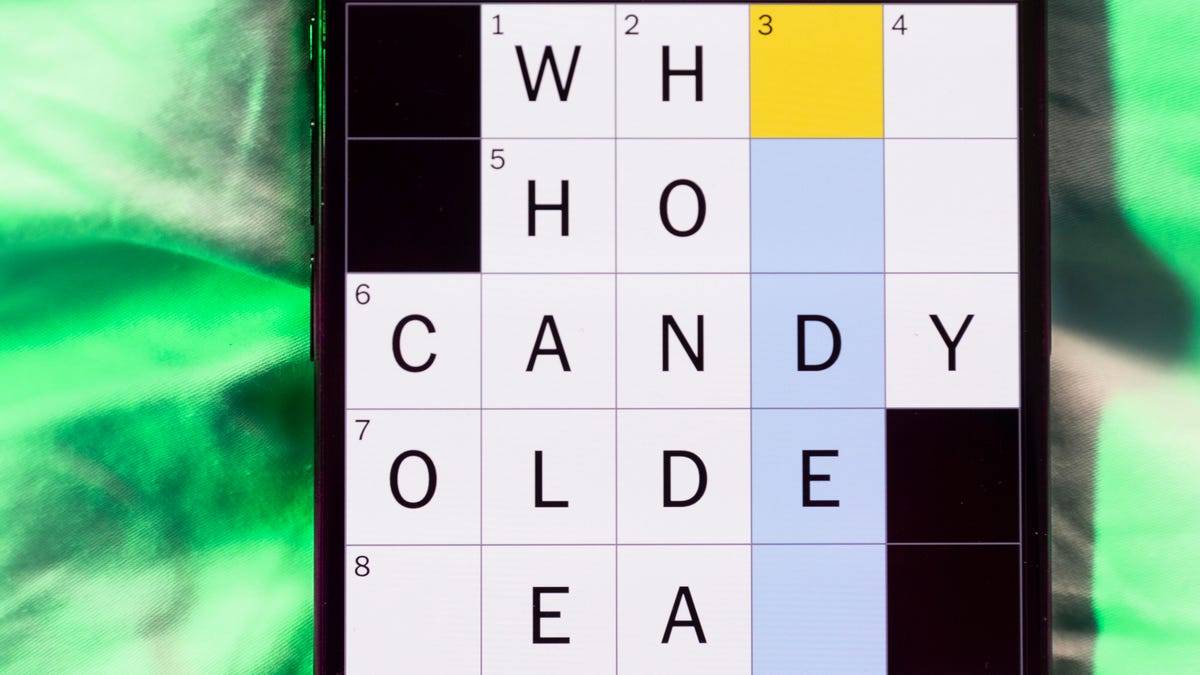
Looking for the most recent Mini Crossword answer? Click here for today’s Mini Crossword hints, as well as our daily answers and hints for The New York Times Wordle, Strands, Connections and Connections: Sports Edition puzzles.
Need some help with today’s Mini Crossword? Some of the clues are tricky, but we have all the answers, so read on. And if you could use some hints and guidance for daily solving, check out our Mini Crossword tips.
If you’re looking for today’s Wordle, Connections, Connections: Sports Edition and Strands answers, you can visit CNET’s NYT puzzle hints page.
Read more: Tips and Tricks for Solving The New York Times Mini Crossword
Let’s get to those Mini Crossword clues and answers.
Mini across clues and answers
1A clue: Fresh addition to a pasta sauce, perhaps
Answer: BASIL
6A clue: Log ___ (water park ride)
Answer: FLUME
7A clue: Group of ships
Answer: FLEET
8A clue: Some drinks from «streams»
Answer: SODAS
9A clue: Documentarian Burns
Answer: KEN
Mini down clues and answers
1D clue: Closest pals, for short
Answer: BFFS
2D clue: «No problems here!»
Answer: ALLOK
3D clue: Shoe material in an Elvis hit
Answer: SUEDE
4D clue: «That is to say …»
Answer: IMEAN
5D clue: Tennis do-overs
Answer: LETS
Technologies
Apple Reportedly Planning Cheaper Macs to Compete With Budget Chromebooks, PCs
Apple doesn’t market its machines as affordable, but that could be changing.
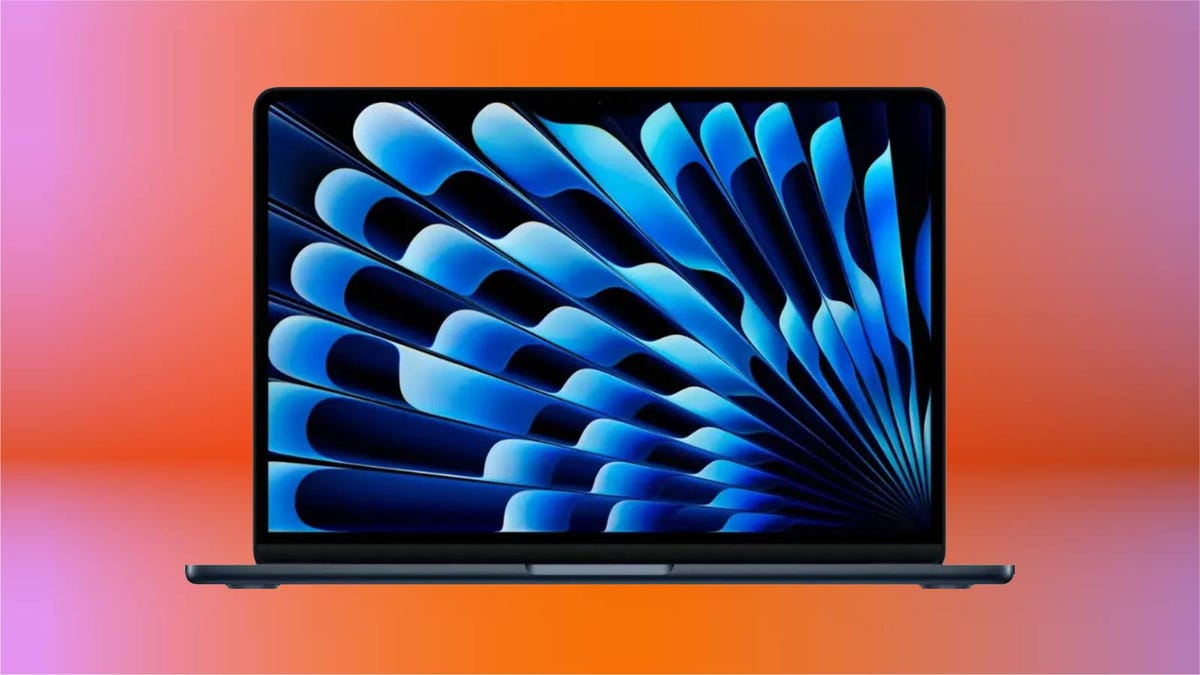
Apple may release more affordable Mac laptops to compete with Chromebooks and budget-friendly Windows laptops as early as 2026.
Bloomberg’s Mark Gurman reports the company has plans to roll out a machine for «well under $1,000.» According to Gurman, the new laptop is already in early production under the codename J700. This matches earlier rumors that a low-cost MacBook Air was in the pipeline at around $599, which would allow Apple to directly compete with other cheap laptops, including Chromebooks and Windows PCs.
A representative for Apple did not immediately respond to a request for comment.
Don’t miss any of our unbiased tech content and lab-based reviews. Add CNET as a preferred Google source.
According to the report, costs will be kept down by using a lower-end LCD that’s smaller than the 13.6-inch MacBook Air, potentially making the new affordable MacBook as small as 12 inches.
Another way Apple could reduce the cost is by using an A-series iPhone chip, which falls short of the top-tier performance offered by the MacBook Pro or the current M4 Air. The upcoming chip may be a variant of the A19 Pro chip that debuted with the iPhone 17 Pro and iPhone Air, which Apple says is capable of MacBook-level performance.
As CNET senior editor Matt Elliott noted, the promise is a bold one. He speculates that the rumored $599 MacBook Air may get the same smartphone processor, or an M-series chip based on that architecture.
Bloomberg also reports that a MacBook Pro with an M5 Pro and M5 Max chip is in development, and Apple has completed work on a MacBook Air powered by the M5 chip, which is planned for release early next year.
The affordable laptop would be designed for casual users, students and businesses, specifically individuals who need a device for tasks such as web browsing, light media editing and document creation. The tech giant is also targeting the education market, as well as iPad buyers who may also want a traditional laptop.
«If this is strictly a move to entice consumers with a high-quality, lower-cost MacBook running MacOS in place of an iPad with a keyboard, then yes, Apple can likely take a chunk of that market,» said Josh Goldman, managing editor at CNET.
«Making inroads into the education market at this point, where Chromebooks have taken over since the pandemic, will prove challenging, though I’m sure it’s nothing that throwing billions of dollars at can’t fix,» CNET’s Goldman said.
This price range is ‘a big departure’
Price is likely to be key here. A $599 price tag would place the new Mac in the same range as more affordable Chromebooks and entry-level laptops, representing a significant change from Apple’s previous strategy.
«Apple potentially dipping into the Chromebook range of $300 to $500 with a new MacBook is a big departure,» said Goldman.
He notes that one of Apple’s most affordable MacBooks is the M4 MacBook Air, available new starting at $999 for the 13-inch model. Walmart still sells a new M1 MacBook Air, a 5-year-old laptop, for around $600.
By contrast, an iPad 11th Gen with a Magic Keyboard will run you around $600, making it clear that Apple’s target market for the rumored device is students and lighter users.
Apple typically hasn’t targeted the lower-priced segment of the market with its MacBooks. However, with consumer wallets under pressure from inflation, high tariffs and layoffs, an affordable MacBook could be imperative and timely.
Technologies
Today’s NYT Connections: Sports Edition Hints and Answers for Nov. 5, #408
Here are hints and the answers for the NYT Connections: Sports Edition puzzle for Nov. 5, No. 408.
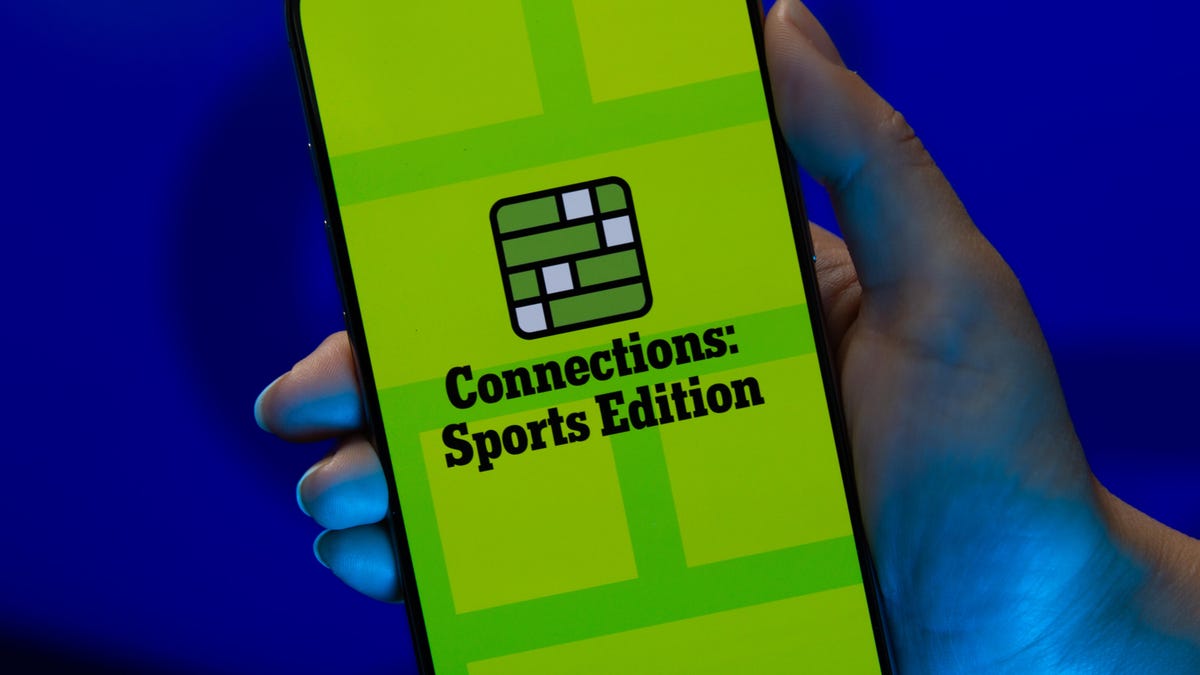
Looking for the most recent regular Connections answers? Click here for today’s Connections hints, as well as our daily answers and hints for The New York Times Mini Crossword, Wordle and Strands puzzles.
Today’s Connections: Sports Edition is pretty diverse. The blue answers stuck out to me right away, because some of them are super famous and the others felt like they belonged with those names. If you’re struggling but still want to solve it, read on for hints and the answers.
Connections: Sports Edition is published by The Athletic, the subscription-based sports journalism site owned by the Times. It doesn’t show up in the NYT Games app but appears in The Athletic’s own app. Or you can play it free online.
Read more: NYT Connections: Sports Edition Puzzle Comes Out of Beta
Hints for today’s Connections: Sports Edition groups
Here are four hints for the groupings in today’s Connections: Sports Edition puzzle, ranked from the easiest yellow group to the tough (and sometimes bizarre) purple group.
Yellow group hint: How to see a game.
Green group hint: Soccer.
Blue group hint: Giddy up!
Purple group hint: Not a run play.
Answers for today’s Connections: Sports Edition groups
Yellow group: Ways to consume a sporting event.
Green group: NWSL teams.
Blue group: Triple Crown horse racing winners.
Purple group: Pass ____.
Read more: Wordle Cheat Sheet: Here Are the Most Popular Letters Used in English Words
What are today’s Connections: Sports Edition answers?
The yellow words in today’s Connections
The theme is ways to consume a sporting event. The four answers are in person, radio, streaming and television.
The green words in today’s Connections
The theme is NWSL teams. The four answers are Current, Dash, Pride and Spirit.
The blue words in today’s Connections
The theme is Triple Crown horse racing winners. The four answers are Citation, Gallant Fox, Omaha and Secretariat.
The purple words in today’s Connections
The theme is pass ____. The four answers are breakup, interference, protection and rush.

